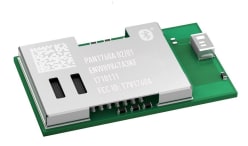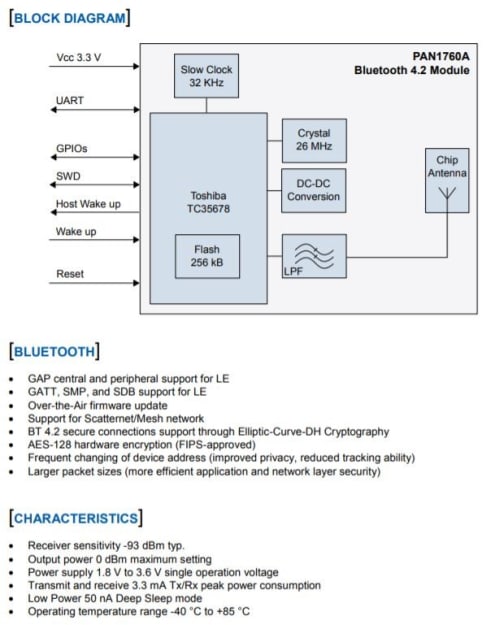Advanced Wireless Connectivity: Panasonic’s PAN1760A Bluetooth Module
Follow articleHow do you feel about this article? Help us to provide better content for you.
Thank you! Your feedback has been received.
There was a problem submitting your feedback, please try again later.
What do you think of this article?
Industry experts predict that some 125 billion devices will be linked together via the Internet by 2030, transforming how people, businesses and society interact. Wireless technology has taken decisive steps in recent years to ensure sustainable operation in diverse IoT operations.
IoT systems typically include several devices – sensor nodes, a processing subsystem and a wireless communication subsystem – all needing a power source, often a battery. The challenge is to provide power for continuous wireless connectivity while conserving energy to prolong battery use. WiFi is the most ubiquitous technology on the market: however, the main drawback of current WiFi design is its relatively high power consumption – around 300mA inactive data transfer state, plus power is also consumed in idle mode. For some IoT devices running on batteries, especially those that cannot be easily recharged, WiFi is simply too power-hungry. Bluetooth is optimized to run on an extremely low power state, operating at only 2% power duty cycle and consuming a mere 50nA while still remaining available for device discovery and connection setup.
Enabling Advanced Wireless Functionality without Compromising Battery Life
Launched in October 2017, Panasonic’s PAN1760A module (174-1905) enables advanced wireless connectivity and is one of the industry’s lowest power Bluetooth Low Energy SoC. It enables advanced wireless functionalities in IoT, medical and industrial applications without compromising battery life, as it has a peak power consumption of just 3.3mA in transmit and receive mode, as well as supporting mandatory and optional Bluetooth 4.2 features.
The PAN1760A module is a small SMD device with a compact footprint of just 15.6mm x 8.7mm x 1.9mm, based on Toshiba's single-chip TC35678 Bluetooth semiconductor device with embedded Toshiba Bluetooth 4.2 LE stack and embedded flash for user applications in stand-alone operation. The PAN1760A product can either be operated in AT-Command or Host mode for very simple integration of Bluetooth connectivity into existing products, or in Stand-Alone mode. In Stand-Alone mode, with 256 kB flash memory and 83 kB RAM for user application (significantly greater than any competitive products), the PAN1760A can be used for many applications without the need for an external processor, saving cost, complexity, and space.
To summarize: the PAN1760A is superior to incumbent products due to its industry-leading power consumption which allows extended battery life or enables customers to design in smaller batteries; its Bluetooth mesh stack is BT SIGv1.0 certified, performance parameters are specified with 3.3 mA Tx/Rx peak, one of the closest competitor offers Tx 4.8mA and Rx 5.1mA; in deep sleep mode, consumption is a mere 50 nA.
Panasonic’s PAN 1760A is perfect for industrial beacon and BT mesh networking. Other applications outside of the industrial sector include two huge growth markets: healthcare wearables that are battery-based; the smart home market - sensors, remote control based on batteries; and many other general battery-driven applications.
Download the attached White Paper below or see the Featured Product for more information.



